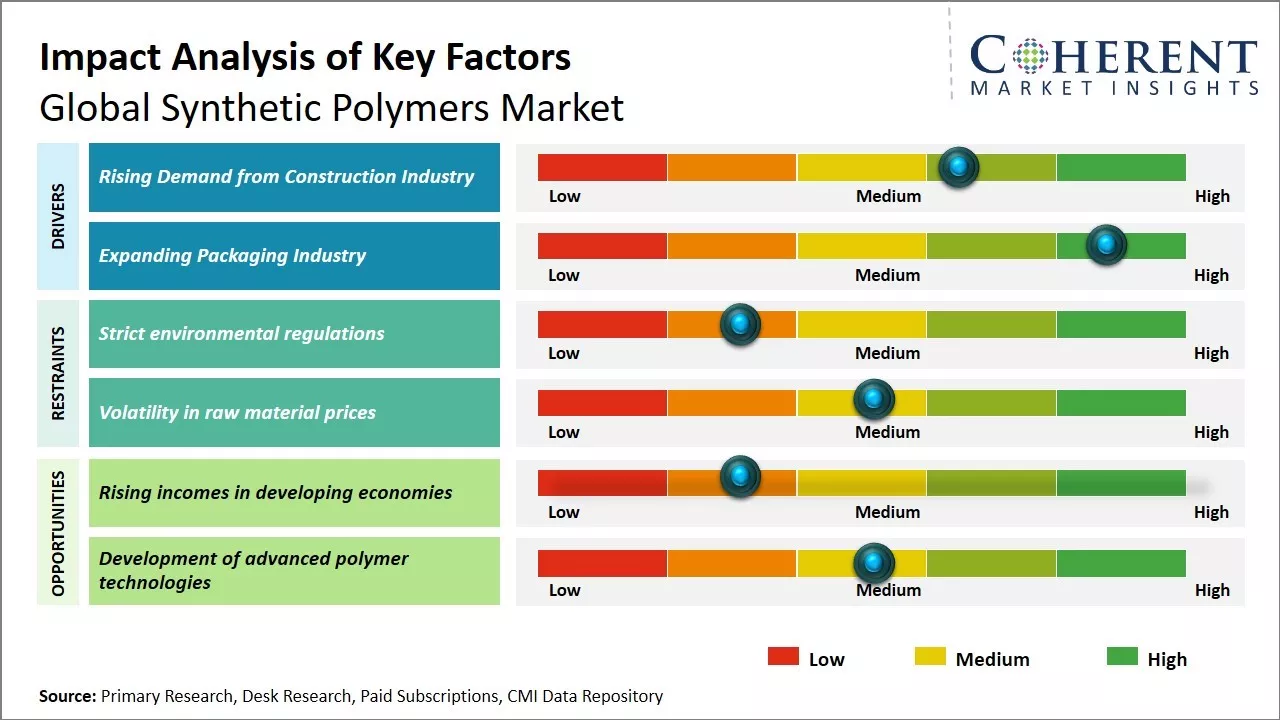The global synthetic polymers market is estimated to be valued at USD 26.32 Bn in 2025 and is expected to reach USD 38.06 Bn by 2032, growing at a compound annual growth rate (CAGR) of 5.4% from 2025 to 2032.

To learn more about this report, Request sample copy
Synthetic polymers find wide applications across various end-use industries such as packaging, automotive, construction, healthcare, electrical, and electronics. Growth of the packaging industry along with rising automobile production are expected to drive the demand for synthetic polymers globally during the forecast period. The global synthetic polymers market is expected to witness significant growth over the forecast period. Increasing construction activities in emerging economies coupled with rising disposable income are expected to propel the demand for synthetic polymers. Moreover, the growing need for lightweight and durable materials in the automotive industry along with rising penetration of sustainable and eco-friendly polymers will augment the market growth. However, stringent environmental regulations regarding plastic disposal and recycling may hinder the market growth.
Rising Demand from Construction Industry
The global construction industry has been growing significantly over the past few years mainly attributed to increasing urbanization and industrialization across both developed and developing economies. Rapid infrastructure development including roads, bridges, buildings, dams, and other large construction projects require massive use of various construction materials. Synthetic polymers have emerged as one of the most important construction materials owing to their versatility, durability, and cost effectiveness. Polymers, such as polyvinyl chloride (PVC), polyethylene (PE), polypropylene (PP), and epoxies, find wide usage in piping systems, window profiles, flooring, insulation, tubing, and other applications. Their corrosion resistance, light weight, and easiness in molding make them suitable for varied construction needs. Demand for polymers is particularly high from residential construction sector as global housing construction receives a thrust from swelling middle class population and increasing construction of affordable housing units. The commercial construction sector involving malls, offices, and other workplaces also stimulates polymer consumption for roofing, cladding, railings, and other architectural components. Besides the core construction industry, growing infrastructure of roads, bridges, and railways is propelling the demand for synthetic polymers. Materials like PE, epoxy, and polyurethane are extensively used in the construction of varied infrastructure assets. Flexible PVC finds applications in the fabrication of pipes for the transportation of water, oil and gas over long distances. Rising investments by governments worldwide in upgrading existing infrastructure and adding new infrastructure projects acts as a key driver. Governments especially in emerging nations recognize infrastructure as a driver of overall economic growth. This would continue bolstering consumption of synthetic polymers in the coming years.
Joining thousands of companies around the world committed to making the Excellent Business Solutions.
View All Our Clients